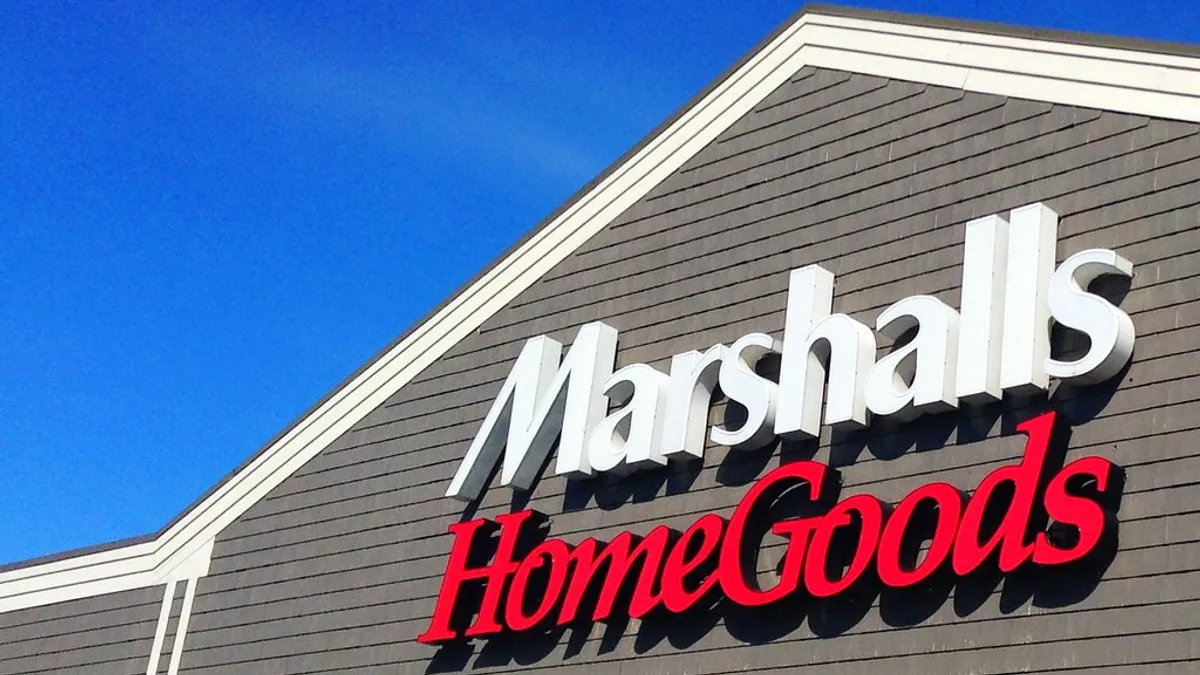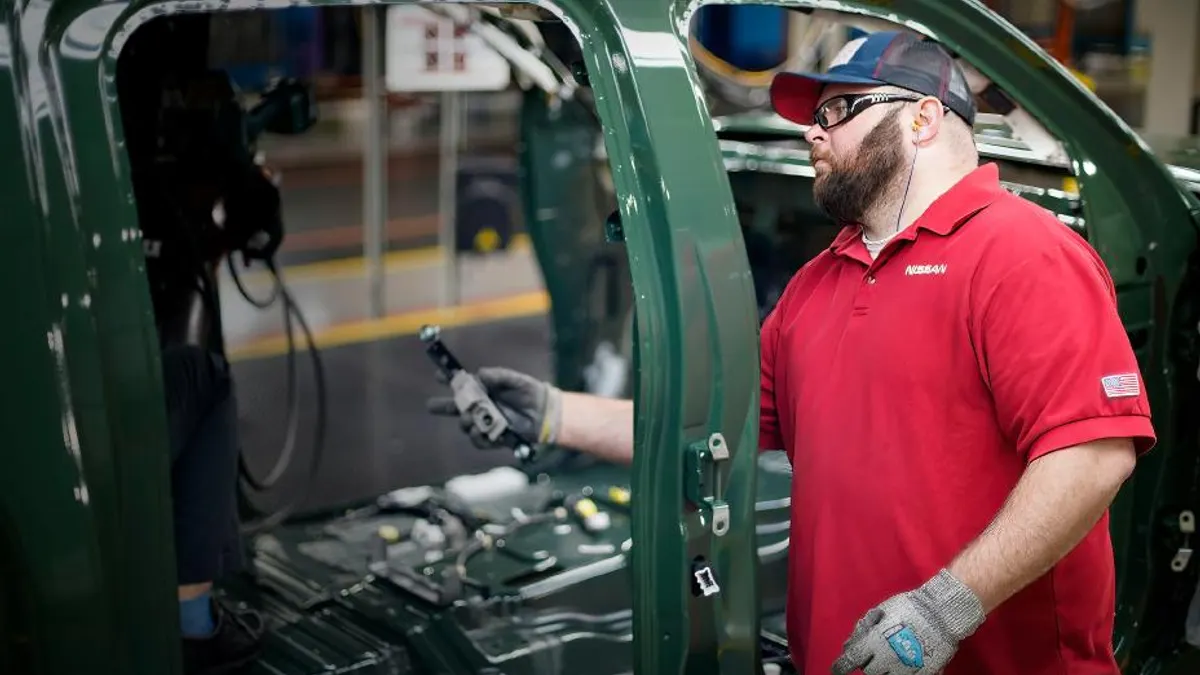When we think airport and supply chain, we usually think the movement of goods and air cargo. But what about all those stores and restaurants in airports? They're open early, and late. Their footprints are small and so are their storage rooms — if they have one. Deliveries are highly scheduled, requiring extra security steps. And their target demographic changes depending on the terminal, store placement and flight schedule.
With all these variables, how does airport retail supply chain and performance compare to their standalone counterparts?
The airport is in many ways the ideal shopping destination. Stores have a captive market with shoppers in a holiday mindset, making them inspired to browse and get good deals.
"The old-fashioned view of the airport as a transport hub providing travel essentials and a single duty-free store, is dead," said Samantha Hart, senior retail consultant at Capgemini Consulting in an email to Supply Chain Dive. "The airport itself is as much an experience as the travel destination itself."
Airport retailers embrace the 'golden hour'
Travelers in North American airports wait on average 90 minutes between security and boarding at medium and large airports. Between 76% and 90% of concession space is after the security lines, in the "airside" part of the airport (versus "landside" before security). Restaurants and stores that are airside tend to earn more. In the Indianapolis airport, for example, airside retailers earned an average of $978 per square foot, while landside concessions earned $527.
"Airports recognize the 'golden hour' between clearing security and boarding your plane is the only time you have to encourage the passenger to spend their money," Hart said. Restaurants are raising the bar, offering high-end celebrity chef restaurants with Instagram-worthy food. And then there are spa treatments and sleep pods, plus some airports vying for high status are introducing experiences like movie theaters and indoor rainforests.
"Airport stores can easily be among their best performing stores, despite their small footprint."

Samantha Hart
Senior Retail Consultant, Capgemini Consulting
To reduce the competition and engage customers to maximize their time and spend, some airport stores allow customers to pre-order goods before getting to the airport, bring goods to the gate or ship them home. Dufry, the duty-free store in many international airports, lets customers reserve items ahead of time, while Duty Free Americas delivers items to the gate and customers don’t need to visit the store at all.
The app Airport Sherpa allows flyers at Baltimore Washington International to order retail items and food for pick-up or gate delivery for a fee. That’s helpful to flyers in a rush who don’t want to wait in line but also for those who can’t easily switch terminals and access other stores, due to security requirements or time. At Your Gate is another such service, serving San Diego and Liberty International Airport in Newark, New Jersey.
In terms of the supply chain, the delivery staff has obvious challenges of getting the items to the passengers at the right time and working with the airport on access. Retailers and restaurants need a system in place to handle orders coming from the app and time them properly, as orders can come in before the customers even arrive at the airport. The apps promise a delivery window.
Are airport sales a cash cow?
Airport shops and restaurants aren’t just competing against each other; they’re competing against retail at the airport city’s stores and in other destinations’ airports and downtowns. High returns aren’t guaranteed for airport concessions, but they have a deserved reputation for higher sales and profits per square foot. When retailers get the product categories stocked properly, matching products with the right customer demographics, destinations and prices, "airport stores can easily be among their best performing stores, despite their small footprint," said Hart.
Four of five of WH Smith’s best performing stationary and bookstores are in Heathrow compared to main street and have been helping to boost pre-tax profits for the entire chain.
Higher airport pricing may account for some increased profits, but not all airports allow price gouging. The Indianapolis airport requires vendors to charge the same price inside as they do in their outside stores. Of airports responding to an Airports Council International - North America survey, 61 airports use a "street plus a percentage" pricing model, while 31 use a "street pricing" method.
Logistics pose challenge to airport retailers
Airport retailers have unique supply chain challenges, according to Hart.
- Security: Products go through additional screening at the airport, which is an issue for liquids, but it’s also to prevent smuggling.
- Longer opening hours: Stores open earlier and stay open later, meaning more shifts and odd-hour shifts, though the upside is minimal staffing, as stores are small.
- Onboarding time: Staff members need additional security checks to work inside the airport, so recruiting and onboarding takes longer. Some airports and stores need multilingual staff members.
- Replenishment: With less onsite storage, replenishing stock is more difficult. Some stores have no stock rooms, and others have only small ones that may be off-site and not easily accessible. This can directly impact customer experience if they want a different size or color. "As a result, only core ranges and one or two of each item can realistically be stocked," Hart said. Integration of digital and physical is essential.
- Strict delivery times: Supply calendars have to be planned far in advance, and delivery times are strict, per airport rules. "This means there is little room for ad hoc resupplies," Hart said.
- Difficult returns: Customers cannot easily return an item once they’ve left the airport. Returns have to be shipped for processing and refunds, which delays the process and impacts the customer experience.
Airport retailers face ever-shifting target consumers
Airport merchandise differs from outside retail in a number of ways, according to Hart. They may stock exclusive items to avoid customers comparing prices on their cell phones, whether its bundling, unique package sizes or creating limited-edition varieties. They also stock fewer large items, as they’re difficult to bring on an airplane and store onsite, given limited storage space.
Airport retailers target customer demographics based on the terminal and flights served. Are the customers domestic? Long-haul international? Business travelers? Tourists? "All of these passenger groups have different needs and wants from the airport, which is in turn reflected in the types of brands, ranges and products sold," Hart said.
When stocking for seasonality, airports have more overlap and need variety. "In the colder months, people are still traveling to find winter sun, so summer essentials are still relevant alongside ski wear and Christmas gifts," said Hart.
Airports have unique marketing calendars tied to events, passenger groups, destinations and travel periods. The Paris airports are targeting four international groups for marketing: China, Russia, Japan and Hong Kong, partnering with tourism organizations to send emails to potential travelers in anticipation of travel. They’re also planning Chinese and Russian new year events.
"Customers do not distinguish that airport retail has more operational challenges, regulations or different operating models," Hart said. “They still expect the same customer experience, service options and range that they would get in any other store."





















